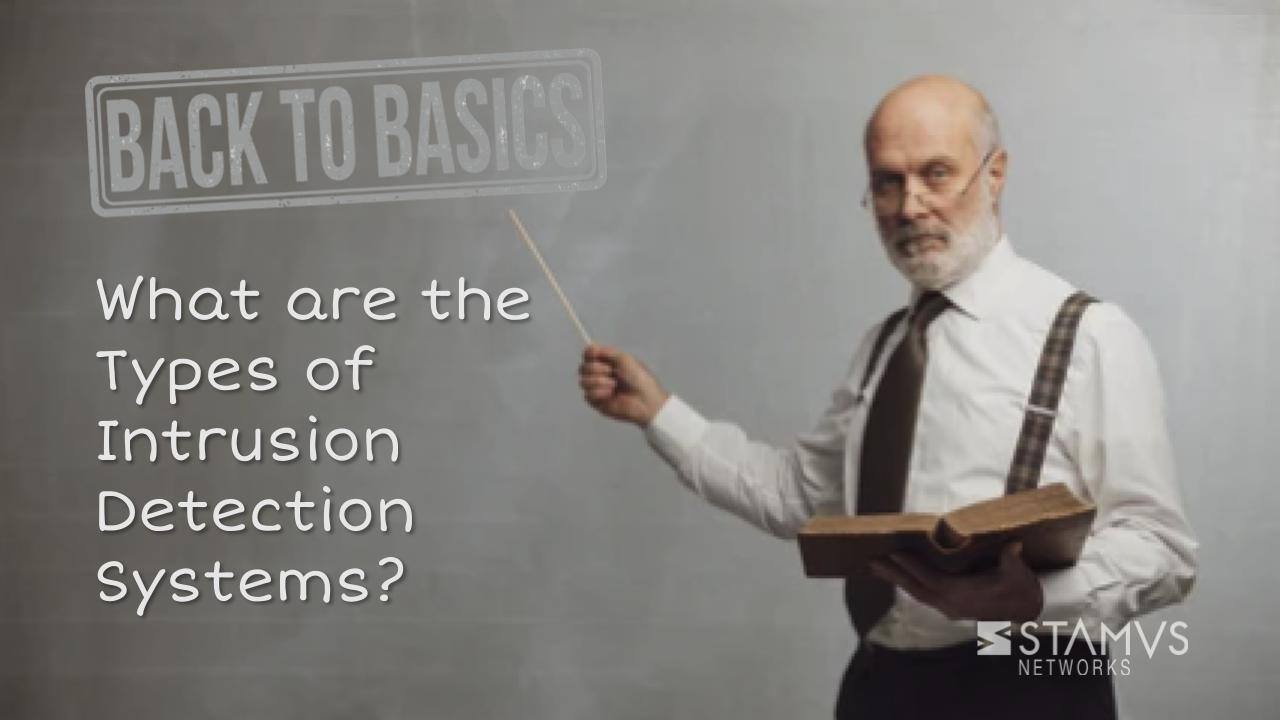It is easy to get confused about the various types of intrusion detection system (IDS) examples, but thankfully it is not nearly as complicated as it may seen. By the end of this blog post, you will be confident in the different types of IDS tools, their different detection methods, the types of intrusions, and the difference between IDS and IPS.
What are the types of intrusion detection system?
There are two main types of Intrusion Detection Systems (IDS) based on their deployment and data source:
1. Network Intrusion Detection System (NIDS): NIDS act as network monitoring devices deployed at strategic points within a computer network. Their primary function is to continuously capture and analyze network traffic data traversing a specific network segment. NIDS can be implemented in two primary ways:
- Dedicated hardware appliances: These are specialized devices solely designed to perform NIDS functions.
- Software applications on network servers: Existing network servers can be leveraged to host NIDS software, enabling them to perform network traffic analysis alongside other server functionalities.
NIDS typically utilizes network adapter promiscuous mode. This mode allows the NIDS to capture all network traffic on the attached network segment, regardless of its intended recipient. NIDS employs two main techniques for analyzing captured network traffic data: signature-based detection and anomaly-based detection.
2. Host-Based Intrusion Detection System (HIDS): In contrast to NIDS which focuses on network traffic analysis, HIDS provides security for individual devices (hosts) within the network. HIDS function as software agents deployed directly on the operating system of the host device itself. Their primary function is to monitor and analyze activity occurring on the host device. HIDS are deployed as software agents on individual servers, desktops, or laptops within the network. A single HIDS agent is typically installed on each host device for dedicated monitoring.
HIDS collects data from various sources on the host device, including:
- System logs: These logs record events and activities within the operating system of the host device.
- File access attempts: HIDS monitors attempts to access files on the host device, including successful and failed attempts.
- Running processes: HIDS maintains a record of processes currently running on the host device.
HIDS primarily utilizes anomaly-based detection techniques. By analyzing the collected data, HIDS establishes baselines for typical host activity. Significant deviations from these baselines, such as unusual file access attempts or unexpected processes running, can indicate potential intrusions or suspicious behavior.
What are the two classifications of IDS?
While some argue that there are only two IDS classifications, the reality is that a third exists, combining both of the existing classifications. Currently, the classifications of intrusion detection systems based on detection methods are anomaly-based, signature-based, and hybrid. These methods define how the IDS analyzes data to identify potential intrusions.
- Anomaly-Based IDS: Anomaly-based IDS focuses on identifying deviations from normal behavior within a network or system. It works by establishing a baseline for normal activity by statistically analyzing network traffic or system activity over time. This baseline becomes a reference for identifying anomalies. The IDS then continuously monitors network traffic or system activity and compares the real-time data to the established baselines. Significant deviations from these baselines are flagged as potential intrusions.
- Signature-Based IDS: Signature-based IDS relies on a predefined database of attack signatures to identify malicious activity. These signatures represent known patterns or fingerprints of network attacks or suspicious system behavior. The IDS continuously monitors network traffic or system activity and compares this data against the database of attack signatures. Any matches trigger an alert, indicating a potential intrusion attempt.
- Hybrid IDS: A hybrid intrusion detection system combines both anomaly-based and signature-based detection methods to address the limitations of each approach. A hybrid system leverages signature-based detection for known threats and anomaly-based detection for novel attacks. This enhances the overall effectiveness of intrusion detection.
Each of these three detection methods (anomaly-based, signature-based, hybrid) offers different strengths and weaknesses. Choosing the most suitable approach depends on factors like the specific security requirements of the network, the resource availability for managing the IDS, and the acceptable level of false positives.
What are the three types of intrusion?
The term "intrusion" in the context of cybersecurity can have a broad meaning, but it often refers to unauthorized access attempts or efforts to compromise the confidentiality, integrity, or availability of a computer system or network. Here are three common types of intrusions in cyber security to be aware of:
- Network Intrusions: These involve unauthorized access attempts to a computer network. Attackers might try to gain access to sensitive data, disrupt network operations, or install malware on connected devices. Examples include:
-
- Port scanning: Attackers probe a network to identify open ports and vulnerabilities on connected devices.
- Denial-of-service (DoS) attacks: Attackers overwhelm a system with traffic, making it unavailable to legitimate users.
- Man-in-the-middle (MitM) attacks: Attackers intercept communication between two parties and eavesdrop on or alter the data exchange.
- System Intrusions: These involve unauthorized access attempts to a specific computer system. Once attackers gain access, they might steal data, install malware, or disrupt system operations. Examples include:
-
- Password cracking: Attackers use various techniques to guess or brute-force a user's password.
- Exploiting software vulnerabilities: Attackers leverage known weaknesses in software to gain unauthorized access to a system.
- Privilege escalation: Attackers exploit vulnerabilities to gain higher privileges within a system, allowing them to access unauthorized resources or perform unauthorized actions.
- Social Engineering Attacks: These attacks rely on human manipulation rather than exploiting technical vulnerabilities. Attackers trick or deceive users into giving away sensitive information, clicking malicious links, or installing malware. Examples include:
-
- Phishing attacks: Attackers send emails or messages impersonating a legitimate entity to trick users into revealing sensitive information.
- Pretexting: Attackers create a false scenario to gain a user's trust and obtain confidential information.
- Baiting: Attackers lure users into clicking on malicious links or downloading malware by offering something attractive or exploiting fear.
It's important to note that these categories can sometimes overlap. For instance, a social engineering attack might be used to gain access to a network (network intrusion) or a system (system intrusion). By understanding these different types of intrusions, organizations can implement appropriate security measures to mitigate risks.
What is the difference between IPS and IDS?
The difference between IPS and IDS in cyber security is that IPS actively blocks threats while IDS simply provides alerts. The best intrusion detection systems can function as both depending on the configuration, but both systems serve a purpose in an organization’s strategy and come with their own unique benefits and challenges.
- Intrusion Detection System (IDS): Intrusion detection system software continuously analyzes network traffic or system activity for suspicious patterns that might indicate an ongoing attack. These patterns can be identified through signature-based detection, which matches traffic against known attack signatures, or anomaly-based detection, which looks for deviations from regular behavior. Upon detecting suspicious activity, an IDS can raise alerts, log events, and provide valuable insights for security personnel to investigate and respond to potential threats.
- Intrusion Prevention System (IPS): An IPS extends the functionality of IDS by actively taking steps to prevent intrusions. Based on predefined security policies and identified threats, an IPS can block malicious traffic, terminate suspicious connections, or otherwise disrupt the attacker's progress. This can involve techniques like packet filtering, which blocks unwanted traffic based on pre-defined rules, or deep packet inspection, which examines the content of packets for malicious payloads. It is important to note that one of the challenges with IPS is the possibility of non-malicious traffic being blocked based on a “false positive”.
Explore a modern alternative
You need a network security platform that doesn’t generate an endless stream of useless alerts across part of your network, and instead automatically identifies alerts of interest and notifies you of only serious and imminent threats. Your organization deserves response-ready detection with visibility into your entire network regardless of the environment with easy access to all the contextual evidence you need to stop an attack before it can cause damage. Replace your legacy IDS with a modern network detection and response platform that gives you these features and more.
The Stamus Security Platform™ is a network-based threat detection and response solution that eliminates the challenges of legacy IDS while lowering your response time. Stamus Security Platform harnesses the full potential of your network, bringing state-of-the-art threat detection, automated event triage, and unparalleled visibility to the security team.
Book a demo to see if the Stamus Security Platform is right for your organization.
To learn more about replacing your legacy IDS, check out the following resources:
- A Practical Guide for Migrating from Your Legacy IDS/IPS to a Modern Alternative
- 12 Signs It's Time to Upgrade your Legacy IDS/IPS
- 3 Critical Questions to Answer Before a Legacy IDS/IPS Upgrade
- Weak Attack Signals your Legacy IDS will Miss
To be notified of new blog posts and other news, make sure to subscribe to the Stamus Networks blog, follow us on Twitter, LinkedIn, and Facebook, or join our Discord.






